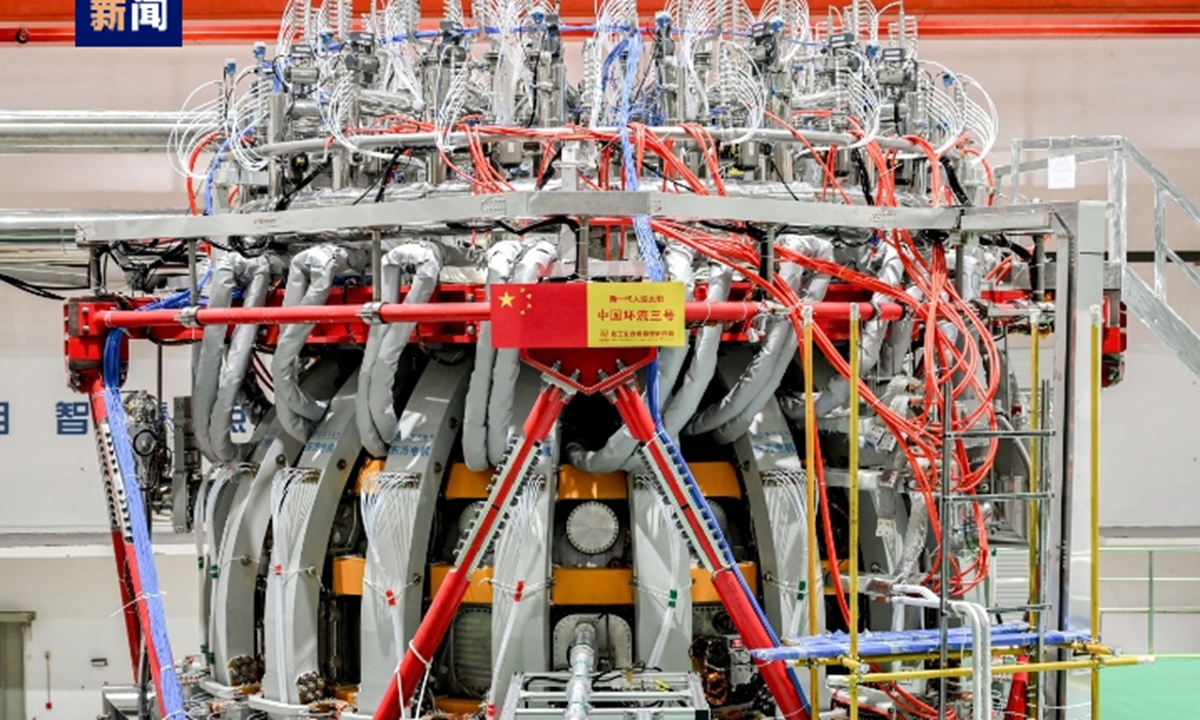
Photo: CCTV
There has been a breakthrough for the Huanliu-3 (HL-3) tokamak, also known as China's next-generation "artificial sun," with researchers discovering an advanced magnetic field structure, a world-first achievement and key step toward enhancing the control capacity of nuclear fusion devices, China Media Group reported on Thursday.
The discovery marks the latest outcome of the first round of international joint experiments for the project, which opened to the world for the first time at the end of last year, aiming to enhance China's global influence in nuclear technology and boost international cooperation in dealing with a global energy crisis.
The experiment involved 17 globally renowned research institutes and universities, such as the French Alternative Energies and Atomic Energy Commission as well as Kyoto University in Japan, representing the first international achievement in developing an advanced magnetic field structure.
The HL-3 tokamak is a large-scale scientific facility for controlled nuclear fusion independently designed and developed by China. It is also known as the next-generation "artificial sun" due to its method of generating energy similar to the sun. It has become China's largest and highest parameter advanced tokamak device after being completed by the China National Nuclear Corp (CNNC) in 2020.
Controlled nuclear fusion is a cutting-edge technology with outstanding advantages such as abundant access to resources, being environmentally friendly, and safety. It is considered one of the key ways to solve global energy and environmental problems and promote global sustainable development.
In August 2023, the HL-3 tokamak achieved a successful high-confinement operation under a plasma current of 1 million amperes, marking a significant advance in the operational capabilities of China's magnetic confinement nuclear fusion devices, and placing the country at the forefront of the world.
Observers said that the object and its fresh achievement signal that China has opened a new chapter in the global joint exploration of nuclear energy, advancing toward a bright low-carbon future to shore up the country's sustainable development.
China has made significant efforts to boost international cooperation for nuclear energy adoption. In May, CNNC and Electricité de France jointly released a prospective study bluebook to deepen cooperation in new-energy exploitation, marking a new historical starting point in bilateral nuclear energy cooperation.
China has also been actively involved in the construction of the world's largest "artificial sun," known as the International Thermonuclear Experimental Reactor (ITER) project, a collaboration between China and France.
On February 29, the ITER signed a new contract for the assembly of a vacuum chamber module with the CNNC. China will be responsible for installing the core equipment, bringing its expertise and strength to the ITER project in collaboration with France.
Due to the similarity in experimental principles, the operation of HL-3 tokamak has provided a platform for China to address key technical challenges faced by ITER and to enhance its research and development capabilities, as well as promote talent development.
Global Times




